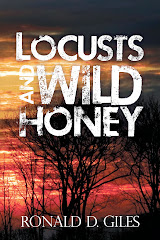Some of you may know that Joan and I are involved in promoting the understanding of Hymns, the stories behind their writing, and encouraging congregational singing. We have been presenting musical programs of hymns at churches since 1997 and have appeared over 120 time at venues in Ohio, New Jersey and Pennsylvania.
I am fortunate to be married to a fine pianist and accompanist who can cover and swing with my spur-of-the-moment inspirations. Below is the format that Joan and I will present this Sunday on Long Beach Island in New Jersey at the historic Spray Beach Chapel, built in 1893 and open during the tourist season there, May through September.
Drop by, if you can. Otherwise, hum along:
Worship Service
Sunday July 17, 2011 – 9:30am – Hymnal for Worship & Celebration
Ronald D. Giles, Baritone -- Joan E. Giles, Accompanist
![]()
Welcome – Hymn 588 -- The Prayer of Convocation -- The Prayer of Confession --
1. “Joyful, Joyful We Adore Thee” – Text: Henry Van Dyke, 1907;
Hymn #1 Music: Ludwig van Beethoven “Ninth Symphony,” 1824
Verses 1 & 2 – All in Unison
2. “Come Thou Fount of Every Blessing” – Text: Robert Robinson, 1757;
Hymn #2 Music: Folk tune published by J. Wyeth, 1813; arr. by Mark Hayes
Ron and Joan
Hymn #3 Music: Mark Andrews, 1934
Verse 1 – Ron; Verse 2 – All in Unison
Swedish Folk Tune, arranged by John Ness Beck
Hymn #4 Verse 1 -- Ron;
Verse 3 -- Ron;
Verse 4 -- All in Unison
![]() ~~ Morning Offering ~~
~~ Morning Offering ~~
~ Prayer—Offertory—Doxology ~
![]()
5. " On Eagle’s Wings” Words and Music by Father Michael Joncas, 1988;
Arranged by Mark Hayes
Ron
Music: Gustav Holst, 1918, arranged by Jane Holstein
Separate Sheet Verse 1 – Ron;
Verse 2 – All in Unison
7. “This Little Light/ This Joy” – Spirituals, arranged by Jeffrey Radford, 1993
Verse 1—This Little Light of Mine -- All in Unison
Separate Sheet Verse 2 – Ron – This Joy of Mine
Verse 3 – This Hope of Mine – All in Unison
Verse 4 – This Faith I Have – Parts – S.A.T.B.
Verse 5 – This Peace I Have – All in Unison
Musical Closing – “Benediction” (“May the Lord Bless You”) – Music: Joan Giles, 1999
"You know when you're young you think you will always be. As you become more fragile, you reflect, and you realize how much comfort can come from the past. Hymns can carry you into the future." ~~ Andy Griffith





